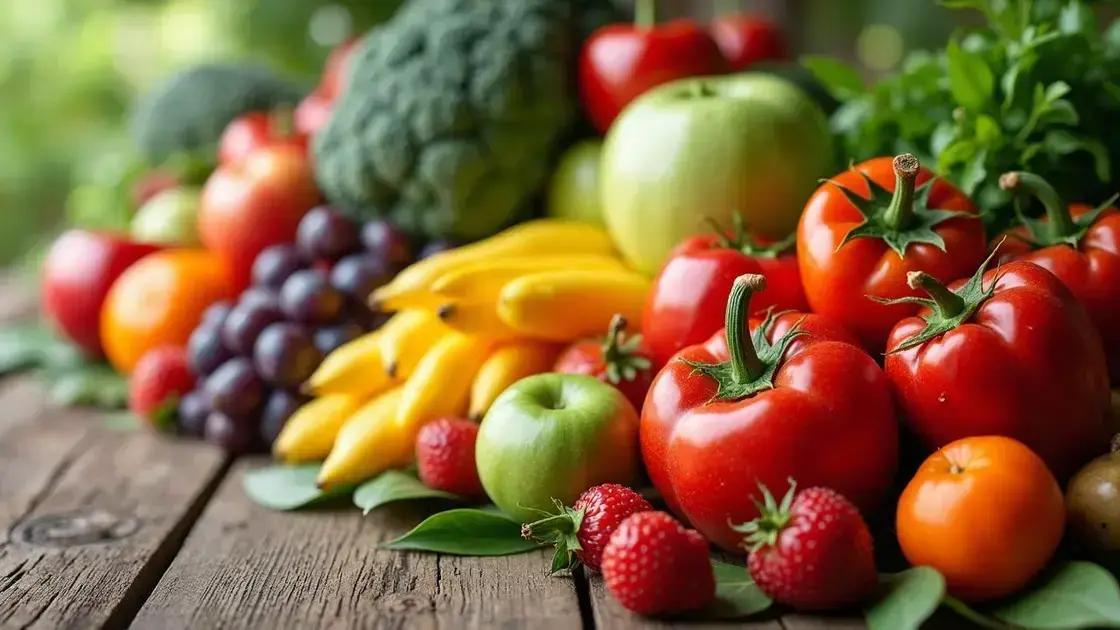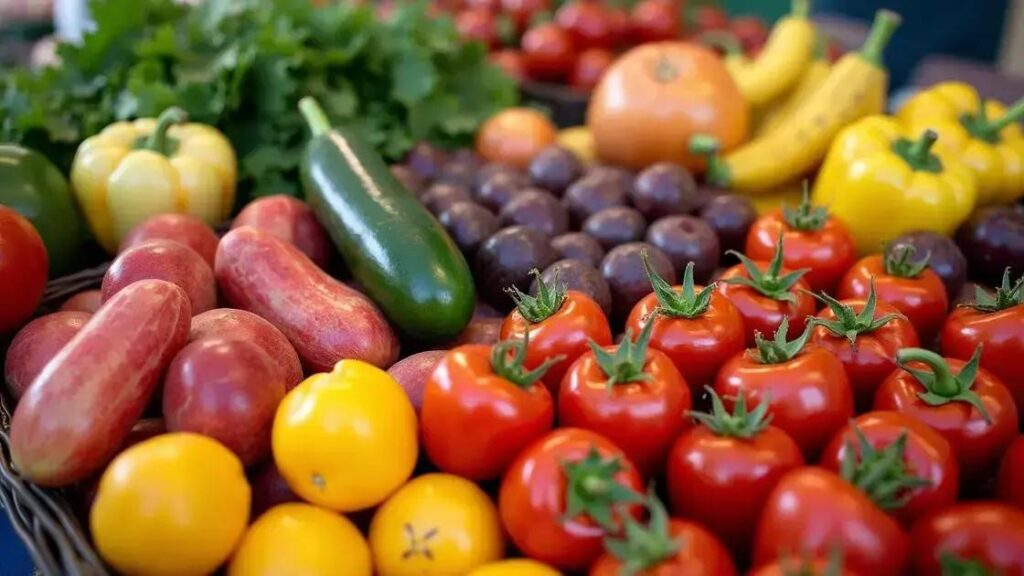Incorporating local and seasonal foods into your diet enhances nutrition by providing fresher, tastier ingredients, supporting local economies, and reducing environmental impact. By exploring local food sources, enjoying the benefits of seasonal eating, and utilizing creative recipes, you can improve your meals and overall health.
Incorporating local and seasonal foods into your diet can significantly enhance your nutrition. By choosing fresh, seasonal ingredients, you not only support local farmers but also benefit from foods rich in nutrients. This article will discuss how to identify local food sources, the advantages of seasonal eating, and simple tips to enrich your meals with these nutritious options.
Understanding Local Food Sources

Understanding local food sources is crucial for anyone looking to enhance their nutrition. Local food sources include farms, markets, and community-supported agriculture (CSA) programs. These sources allow consumers to access fresh, seasonal produce while supporting their local economy.
Types of Local Food Sources
Many types of local food sources exist. Farmers’ markets are popular spots where local farmers sell fresh, seasonal fruits and vegetables directly to consumers. Another option includes community-supported agriculture, where individuals can subscribe to receive a weekly box of fresh produce from nearby farms.
Finding Local Foods
To find local food sources, consider using online resources like local food directories, farmers’ market websites, or community boards. Social media platforms are also great places to follow local farmers and discover events promoting local food.
The Importance of Supporting Local Farmers
When you buy from local sources, you support community farmers, which helps improve local economies. Additionally, local foods often contain fewer preservatives and are harvested at peak freshness, maximizing their nutritional value.
Environmental Benefits
Choosing local food reduces transportation emissions, making it an environmentally friendly option. By minimizing the distance food travels, you contribute to less pollution and a smaller carbon footprint.
Benefits of Seasonal Eating

Eating seasonally offers many benefits that contribute to better nutrition and a healthier lifestyle. When you consume food in season, you enjoy fresher produce that is tastier and more nutrient-rich. These foods are picked at their peak ripeness and delivered quickly, leading to a more flavorful experience.
Nutritional Advantages
Seasonal foods are usually grown in optimal conditions, allowing them to retain their nutrient content. This means fruits and vegetables eaten at their peak often have higher levels of vitamins and minerals compared to those harvested out of season and stored for long periods.
Supports Local Economy
By choosing seasonal foods, you not only benefit your health but also help support local farmers. This enables your community to thrive and keeps food production closer to home, which is crucial for sustainable agriculture.
Environmental Impact
Seasonal eating has a positive impact on the environment. Foods that are in season do not need to be transported long distances, reducing carbon emissions and energy use associated with preservation and refrigeration.
Cost-Effectiveness
Moreover, seasonal produce is often less expensive than out-of-season items. When supply is high, prices tend to drop, making it more affordable to eat fresh, whole foods. This helps you save money while enjoying a variety of nutritious options.
Tips for Incorporating Seasonal Produce

Incorporating seasonal produce into your meals can be easy and fun with these useful tips. These strategies will help you enjoy the freshness of seasonal foods while improving your diet.
1. Plan Your Meals
Start by planning your meals around what’s in season. Looking at a local seasonal produce chart can help you see what fruits and vegetables are available each month, making meal planning efficient.
2. Visit Farmers’ Markets
Take the time to visit your local farmers’ market. These markets often feature seasonal fruits and vegetables straight from the farm. Engaging with farmers can also give you tips on the best ways to prepare produce.
3. Experiment with New Recipes
Try new recipes that highlight seasonal ingredients. You can look for recipes online or in cookbooks focusing on farm-to-table cooking. This way, you can discover creative ways to enjoy seasonal flavors.
4. Preserve and Store
Preserve seasonal produce by canning, freezing, or drying them. This allows you to enjoy their flavors year-round. You can also make jams or pickles to incorporate into your meals later.
5. Join a CSA
Consider joining a community-supported agriculture (CSA) program. This allows you to receive a regular supply of seasonal produce delivered directly to your door, ensuring you regularly incorporate new items into your meals.
Recipes Using Local Ingredients

Here are some delicious recipes that use local ingredients to bring flavor and nutrition to your table. These recipes celebrate what’s in season and make it easy to enjoy fresh produce.
1. Seasonal Vegetable Stir-Fry
For a healthy and colorful meal, stir-fry a mix of seasonal vegetables like bell peppers, zucchini, and carrots. Use olive oil, garlic, and your choice of spices. Serve it over brown rice or quinoa for a complete dish.
2. Fresh Tomato Basil Salad
Combine ripe, local tomatoes with fresh basil, mozzarella cheese, and a drizzle of balsamic vinegar. This salad is refreshing and perfect for summer days. Add a pinch of salt to enhance the flavors.
3. Roasted Root Vegetable Medley
Take advantage of seasonal root vegetables like carrots, beets, and potatoes. Chop them up, toss with olive oil, salt, and pepper, then roast in the oven until tender. This dish makes a hearty side for any meal.
4. Berry Smoothie Bowl
Blend local berries with yogurt and a splash of honey for a nutritious smoothie. Pour it into a bowl and top with granola, sliced bananas, and more fresh berries for a vibrant breakfast or snack.
5. Pumpkin Soup
During fall, use fresh pumpkin in a creamy soup. Sauté onions and garlic, add pumpkin puree, vegetable broth, and spices. Blend until smooth and enjoy a warm, comforting dish.
Embrace Local and Seasonal Foods for Better Nutrition
Incorporating local and seasonal foods into your diet is not only beneficial for your health but also supports local economies and the environment. By understanding local food sources, enjoying the benefits of seasonal eating, and following tips to incorporate these ingredients into your meals, you can enhance both nutrition and flavor.
With a variety of delicious recipes at your fingertips, you can make the most out of seasonal produce while creating exciting and healthy meals for yourself and your family. Embrace the freshness and taste of local ingredients to experience the true essence of wholesome eating.
Making the switch to local and seasonal foods is a delicious step towards a healthier lifestyle.
FAQ – Frequently Asked Questions about Incorporating Local and Seasonal Foods
Why should I choose local and seasonal foods?
Choosing local and seasonal foods supports your community, ensures fresher ingredients, and often provides more nutrients compared to imported options.
How can I find local food sources?
You can find local food sources by visiting farmers’ markets, checking community-supported agriculture (CSA) programs, and using online directories.
What are the benefits of eating seasonally?
Eating seasonally can lead to better-tasting food, cost savings, and reduced environmental impact due to less transportation and preservation needed.
Can seasonal foods be preserved for later use?
Yes, you can preserve seasonal foods by canning, freezing, or drying them, allowing you to enjoy their flavors long after their growing season.
What are some easy recipes using local ingredients?
Some easy recipes include seasonal vegetable stir-fry, fresh tomato basil salad, and roasted root vegetable medley, all showcasing local produce.
How do I incorporate seasonal produce into my meals?
You can incorporate seasonal produce by planning your meals around what’s in season, visiting farmers’ markets, and trying new recipes that highlight these ingredients.












